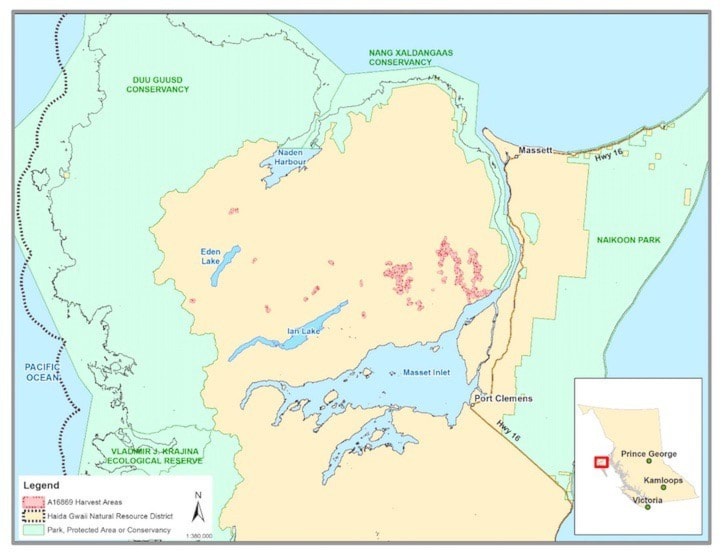B.C.’s forestry watchdog says recent work by Husby Forest Products meets the legal standards set by the province and by the Haida Gwaii land-use order.
Last summer, B.C.’s Forest Practices Board did a random audit that looked at all of Husby’s logging, silviculture, and fire-protection work near Collison Point and Eden Lake over a two-year period starting in August 2014.
Tim Ryan, a long-time forester who now chairs the Forest Practices Board, said the auditors found Husby met most requirements under the law.
One minor problem was that Husby did not have its fire-hazard assessments on hand — an issue the auditors described as “not significant” because Husby went ahead and took the steps required for lowering fire risk, such as gathering and piling up waste wood in logged areas.
As it happens, when the auditing team of two foresters, an engineer, and a chartered account were actually on Haida Gwaii doing field work last Aug. 22 and 23, dry weather and an extreme fire danger rating had forced Husby to shut down all its forest operations.
Still, the auditors found Husby had taken the right steps and had fire-fighting tools on hand.
“Husby had abated fire hazards in an effective and timely manner and now has a system in place to conduct hazard assessments in the future,” said Ryan in a March 2 press release.
“Auditors also noted that Husby located, marked, and mapped culturally significant features in its planning, such as yew, crabapple and monumental cedar trees, to protect them,” he said.
Husby also uses gravel and rock along its forestry roads to stop sediment from getting into fish-bearing streams, added Ryan, and auditors found from their field work and records review that Husby has a well-run silviculture program.
“These are good practices in a challenging operating area,” he said.
Headquartered in Delta, B.C., most of Husby’s forestry operations are on Haida Gwaii, where it has 67 workers, 54 of whom are full-time residents.
Husby is doing most of its logging in the two areas covered by the FPB audit: Collison Point, which is on the north shore of Masset Inlet across from Kumdis Island, and Eden Lake, which is in the centre of Graham Island and flows into Naden River.
HFP Forest Development Plan 2017 - Collison Point and Eden Lake
The FPB report describes both areas as having rolling hills with several streams and wetlands in the low-lying areas. About 60 per cent of the available wood near Collison Point is cedar.
With a licence to cut an annual 192,044 cubic metres of timber — about 38 per cent of the annual allowable cut on Haida Gwaii — Husby is among the four major forest licensees on island that agreed to share a joint Forest Stewardship Plan in 2011.
That plan was the first one made after the Haida Nation and B.C. government co-signed the Haida Gwaii Land Use Objectives Order in 2010.
A follow-up Forest Stewardship Plan is now under public review, and was presented by Husby, Taan Forest, BCTS, and A&A Trading in a series of meetings held earlier this week.
Besides the shared stewardship plan, Husby recently published maps showing its 2017-2018 plans for Collison Point and Eden Lake in greater detail.
Besides cutblocks and roads, the plans show goshawk and forest reserves, wildlife tree patches, cedar stewardship areas, and replanted areas marked ‘free to grow.’
To view the plans, visit husbyforestproducts.com.
Correction: This story has been updated to reflect the fact that fire-hazard assessments are not filed, but are internal documents kept on record by forest licensees.
